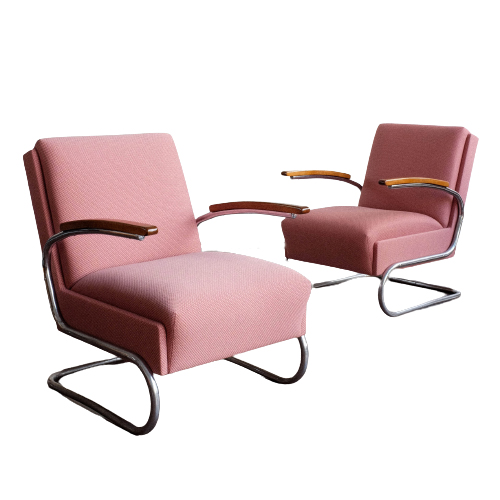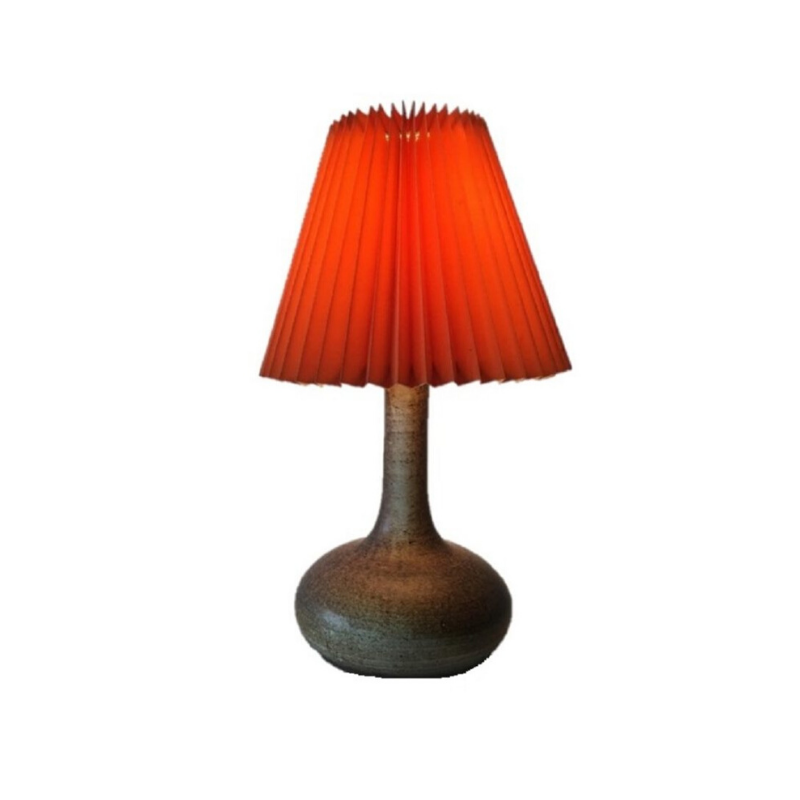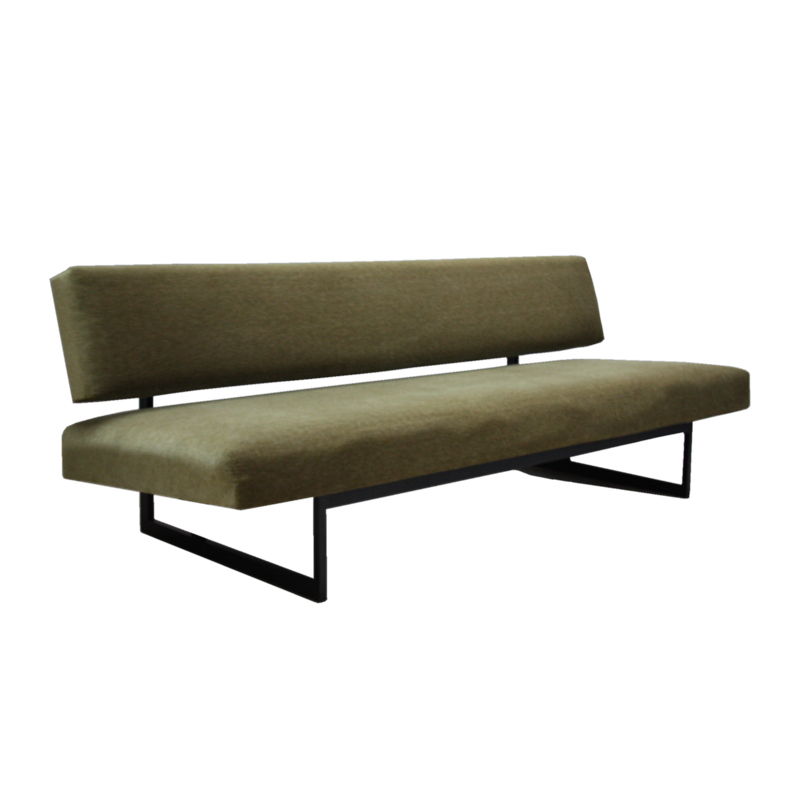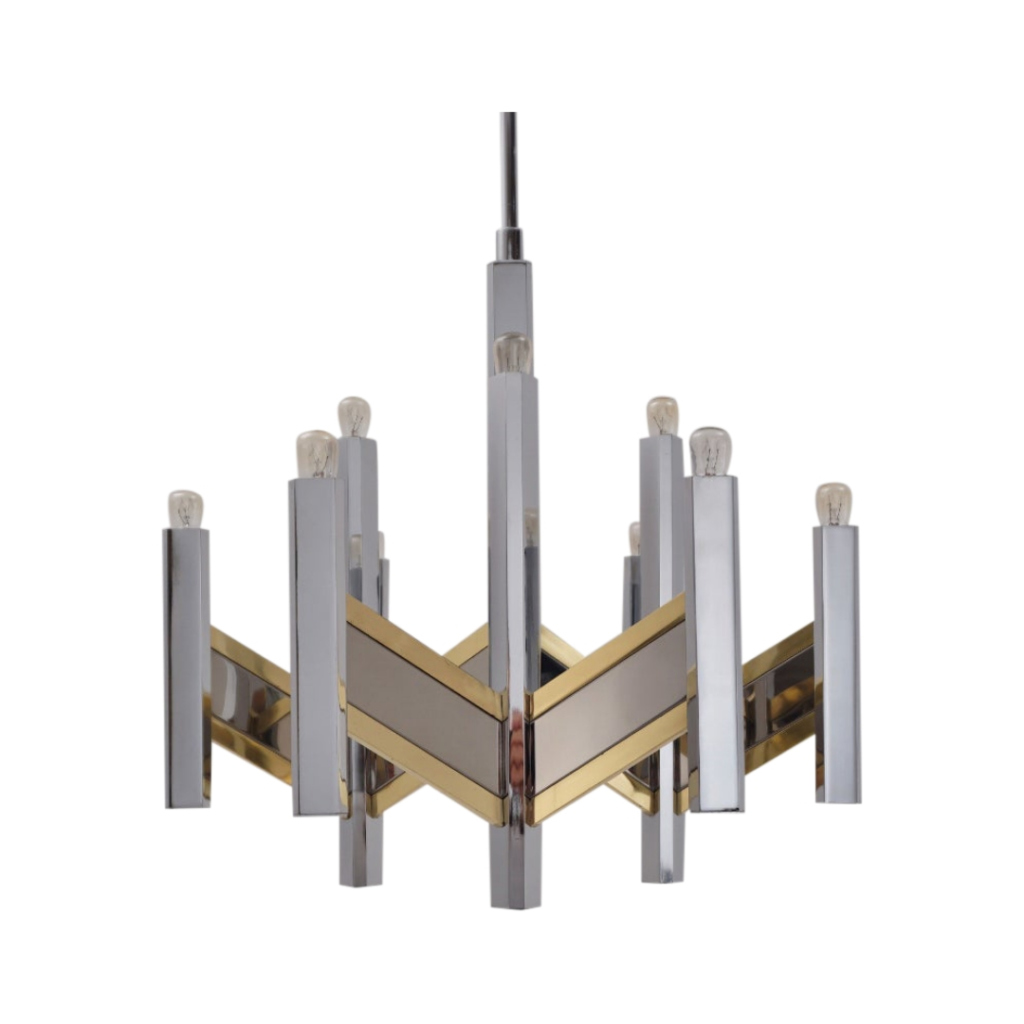I was
told some years ago that it was common in Europe to be able to buy veneered panels (plywood) in custom sizes, with included edge blocking. At least that is what I recall. This would be a piece of cake for a shop (plant, factory) with a widebelt sander and an appropriate press.
I am curious to know what lightweight core materials are being favored now for composite panels. The prototype of such panels, here, would be the hollow-core door, I suppose. I could see ultralight MDF, some kind of plastic foam or other expanded material. . .
The trick to manufacturing your table successfully will be control of the dimension of that slot, its tenons, and the mating parts of the leg, as you know. Not as easy as one would hope, unfortunately, wood being what it is.
Tage Frid said, c 1962, "Vood moofs." Nice man. I wish he could see what I managed to accomplish, finally, as a woodworker. I wish him well.
the core..
I'm using is a resin impregnated kraft paper honeycomb (smallest cell size). There are quite a few choices, foam plastics, alum. but his one seems to have great mechanical properties and is "greener" than most.
The top can be made quite easially with a heated press (how it's done now), but some European companies are developing specific panel making machines that can make cost effective production panels like the ones you are speaking of. this frees up more money for me to spend on high end veneer work (the prototype table is georgous!)
I've got some good sloutions for making those slots accurate too. The proto's were done on a CNC router by the way
Then the
only variable is the movement of the wood itself -- minute growth and shrinkage of wood depending on environmental conditions.
The furniture company Green Designs (Portland, ME, 1993) linked below ships all their pieces KD and depends on long sliding dovetails for construction -- so it can be done. (Check out "assembly video" page for details.)
Thanks for the info on core material. The paper honeycomb is one of the oldest choices, going all the way back to WWII-period aircraft materials. My dad worked at Goodyear as mechanical engineer, then; he had a sample of aluminum-skinned honeycomb-core sheet about 1/2" thick. . .
http://www.greendesigns.com/
exactly...
as is the nature of wood, some movement throught the seasons. Things which consideration of grain direction, mating material selection, finishes etc. can reduce that to a non-issue, or rather a controled issue. So far the table has been through all 4 with no appreciable movement in the leg joint, and that with no mechanical fastener.
...so far so good
Thanks for the link.
Now I just need to find some manufacturing, quite a hard thing to do in wood filled Canada actually. I might just have to start my own shop to make these pieces (been doing cabinet/carpentry work for 20yrs so far)
.
Finding the right place to get something made is pretty hard and can be expensive, my father ( an engineer too, I wonder how common its is for designers to have engineer fathers? Its certainly a big help) had to have something laser cut recently (what prompted me to get the software) and we were told it couldn't be done, it can be done, they just didn't have the creative thinking when it cam to how to nest the part in the sheet.
In my experience the cost is a less of a concern than finding a commercial manufacturer with anything approaching an imagination or the abiltiy to say yes' rather than 'no'.
Though I think thats more to with where I live...
I hear you SDR
I do want to find someone who can make these things. It doesn't take long though for the price get too high. Have someone make it for a price, mark it up for your profit and to cver your expenses, sell to store with room for them to mark up to retail prices. Fifty dollars difference in manufacturing costs quickly becomes hundreds at retail!
That's whay I've been thinking about doing it myself (going to visit a local shop tomorow...one last try first). That and having the machines at my disposal when a new idea pops up would be nice...instant gratification!
HP, one of the hardest things ever to deal with in manufacturing is unimaginitve contractors. So many times I've had to not only design the part but tell them how it was to be made, on which machines, with jigs or fixtures of my design...without which I could have been paying tons more for finished product.
Kudos to you and your dad for doing it yourselves. The key to designing anything that will actually be made and not just a pretty computer rendering is to understand the materials in which you plan to work, their limitations, and what methods can you "make" something with them ie, casting, extruding, laser etc. Try and learn all about the different methods of manufacturing and all their strengths and limitations. Then you can start finding contractors based on their machinery, machines that match your needs
Good luck with your projects
Exactly.
The designed and built environment would be a finer place -- and a more cost-effective one -- if nothing were designed until the designer had become thoroughly familiar with the tools and materials used by his manufacturer. Real problems and their appropriate solutions are so much more likely to satisfy, on every level, than the kinds of design fantasies that now arrive at the point of sale, or at least on the boardroom table -- often dead on arrival, I suspect.
The problem with architecture has been that architects don't spend enough time in the field. Can architecture be the only discipline that suffers this malady ? What if design instructors themselves lack the appropriate experiences that will enable them to be of real help to the student ?
We have a wealth of material and technique, affordable and available, that would be the envy of any and every previous era. Are we making good use of these riches ?
Ah, well -- preaching to the choir, here ! My point was to be that, other things being equal, the experienced maker will be a better designer -- by virtue of knowing the virtues of each method and the limitations of each material -- than will the person who, despite talent, has not had hands-on experience with the methods and materials relevant to his field of design.
I promised myself not to let this thread...
fall off the first page...and than it did!
My reason to keep it up there are the last three contributions. I think they raise some important questions about the relationship between designers and the technology they use or anticipate to use in the production of their products. My position ver the years has changed back and forward over a whole spectrum of possibilities, and I still do not know exactly where the pendulum should stop. Although I often realized that part of my own practice was based upon an in depth knowledge of different technologies, I also realized that to know much about a technology turns itself against you because one has the tendency to self-censure. Consciencly or sub-consciencly one stops to imagine things that are difficult or at first glance impossible to make and you take less risks. But looking at the evidence, in other words looking at the avalange of virtual products that are filling designer's portfolios, magazines, websites, books etc. I have started to wonder if that freedom from technology has been so beneficial to design. With some exceptions it has not. On the contrary, designers with a prospective eye for technological development have been far more innovative than those who fill the pages of books on 21st century projections. It might be an interesting thought for young aspiring designers to be carefull with flamboyant talents that pretend to have worked for all the great names in the industry, but can only show a few "real" products. There is a kind of emerging parallel world of objects that are the result of curious and sometimes over spending product managers in large companies. They have budjets that allows them to give a small "ideation" contract to any name they find in flipping through websites or magazines. The promessing designer ends up with a skillfull virtual image and the dubious prospect of being able to tell the world that he or she has "this-huge-brand" as a client. Nobody is really telling a lie, nobody is really telling the truth either. The reasons why many of power-point-presentation-fillers are never considered is that the designer has no clue in how to make it and in a world where branding is more important than the capability to produce, the client is stuck with a useless proposal.
One of William Morris' biographer's wrote that he was so goodin designing because he understood every step of the process that was needed to produce his designs. SDR points in the same direction and I agree. Place and HP point out that knowing the process allows you to innovate inside the process and I have to agree there to.
If you need any help, please contact us at – info@designaddict.com









